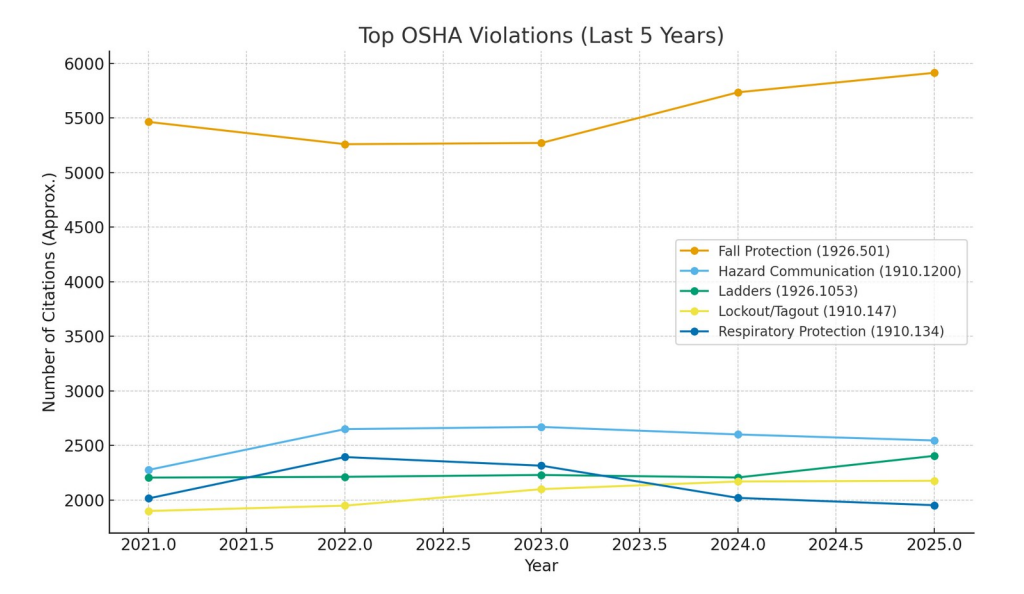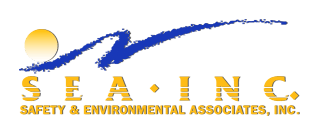The Repeat Offenders: OSHA’s Most Common Citations and How to Avoid Them
Every year, OSHA releases its list of the most frequently cited workplace safety standards. While the names change little from year to year, the numbers tell a story: employers continue to struggle with the same hazards—falls, hazardous chemicals, and machine safety. Understanding these violations is the first step in preventing costly citations and protecting workers.
The 2025 Top 10 OSHA Violations
1. Fall Protection — General Requirements (1926.501)
This is again #1, with ~5,914 preliminary citations.
2. Hazard Communication (1910.1200)
~2,546 citations.
3. Ladders (1926.1053)
~2,405 citations.
4. Lockout/Tagout (1910.147)
~2,177 citations.
5. Respiratory Protection (1910.134)
~1,953 citations.
6. Fall Protection — Training Requirements (1926.503)
~1,907 citations.
7. Scaffolding (1926.451)
~1,905 citations.
8. Powered Industrial Trucks (1910.178)
~1,826 citations.
9. Eye & Face Protection (1926.102)
~1,665 citations.
10. Machine Guarding (1910.212)
~1,239 citations
Five-Year Trends
OSHA’s “repeat offenders” don’t change much, but the data shows whether progress is being made. Unfortunately, the trend suggests that little improvement has occurred in the past five years. Fall protection violations remain the leading citation year after year, indicating persistent gaps in training, enforcement, and workplace culture. Hazard Communication citations remain steady, reflecting ongoing struggles with labeling, SDS management, and employee training. Lockout/Tagout and Respiratory Protection issues continue to resurface, suggesting that many facilities are either not implementing comprehensive programs or failing to maintain them over time. These recurring problems highlight the fact that safety isn’t just about written policies—it requires consistent oversight, leadership buy-in, and a proactive safety culture to see real progress. Check out my previous blog for some more insights
OSHA’s Top 10 Most Cited Health and Safety Violations of 2024 a Deeper Look!

Source: OSHA / NSC / EHS Today
What This Means for Employers
- Falls: Still the leading cause of death in construction—training and equipment inspections are critical.
- HazCom: With OSHA’s upcoming HAZCOM 2025 revisions, employers need to update SDSs, labels, and training now.
- Lockout/Tagout: Maintenance and servicing hazards continue to expose workers to preventable risks.
- Respiratory Protection: Proper fit testing and program management are essential, especially post-COVID.
How SEA Can Help
At SEA, we specialize in turning compliance challenges into proactive safety programs.
Our services include:
- Facility audits to identify and address risks before OSHA does.
- HAZCOM 2025 readiness reviews (labels, SDSs, training).
- Custom training programs for fall protection, lockout/tagout, and PPE.
- Ongoing compliance support tailored to your industry.
Don’t wait for OSHA to show up at your door. Act now to close gaps, protect your workforce, and reduce liability. Contact SEA today for a compliance consultation and let us help you stay off the Top 10 list.



